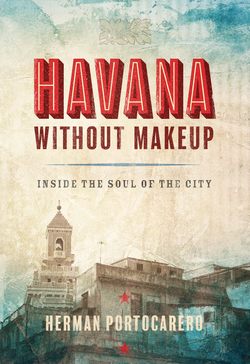Читать книгу Havana without Makeup - Herman Portocarero - Страница 16
На сайте Литреса книга снята с продажи.
Оглавление9.COMMUNIST ORISHAS?
The Cuban Revolution had its own specific impact on that culture. First, the egalitarian utopia did away with many – though certainly not all – aspects of racism in Cuban society. Yet at the same time, the Afro-Cuban religions were once again seen as backward superstitions. This drove them back underground, where they had been to a large extent under slavery. In the 1970s, newsreels in Cuban cinemas routinely attacked santeros, along with evangelical Christians, as counterrevolutionary reactionaries. But since the Santería traditions were too strong to be eliminated, at the same time the government attempted to co-opt them as purely cultural manifestations, especially via music and dance. In fact, under Communist rule, the religious aspects became stronger and stronger, and one may safely say that Santería, next to the stubborn Catholic Church, became one of the few powers in Cuba outside the Communist party to exist in their own right and maintain their own networks while having a real impact on the society. This also resulted in a very peculiar relationship between Santería and Freemasonry, which was widespread before the Revolution, and was also driven underground.
As of 1992, when the Cuban constitution was amended to change Cuba from an “atheist” state into an agnostic one, and to counterbalance attempts by the Catholic Church to monopolize the new religious freedoms, the Cuban state began to openly court those involved in Santería as part of its balancing act. This was especially obvious at the time of the Pope’s visit in 1998. The national patron saint La Virgen de la Caridad del Cobre was paraded around the island to warm people up for the visit, but one may safely assume that half of the worshippers turning out came to greet the orisha Ochún.
The new religious freedoms also resulted in other ambiguous situations. Local officials, aware of the influence of the santeros in their communities, sometimes maintained discreet contact with them, and at times openly joined their activities.
Stubborn beliefs: on one intersection, the impressive but rundown Masonic headquarters faces Pope Francis and a well-kept Catholic church amid the inventos of the Havana habitat
The Communist government contributed to the strengthening of traditions in another way. In the mid-1990s, when Cuba opened up for tourism, Cuban music became very popular worldwide. Given the importance of percussion in all of Cuban music and the close links between popular music and the sacred drum, this gave Santería a new boost.
The recognition of religion and religious pluralism changed the official discourse on African traditions. African tradition is now more recognized as an integral, even essential, part of the Cuban soul and of cubanía. But this has been given some peculiar twists. The revival of the traditions as of the 1980s is sometimes presented, in part, as a result of the massive Cuban presence in Africa in military operations and development cooperation. In this view, the families of the 50,000 or more Cuban soldiers fighting in Angola and Ethiopia reportedly turned to the orishas for spiritual solace.
It may be true that individual Cuban soldiers in Angola, during a long and often difficult struggle, became aware that they were fighting on ancestral ground, but truth be told, this was not recognized until much later. In fact, the harsher truth may be that Angola veterans, disappointed by their return to the island after being called heroes during the conflict, turned inward. In extreme conditions, it is common to turn to religion, particularly for younger people.
In another typical attempt to recuperate souls for political purposes, the popularity of Santería is now sometimes presented as part of a worldwide search for values against the evils of Darwinist capitalism. Nevertheless, many Cubans of African descent continue to feel that their culture is at best partially recognized and appreciated by the State. The resurgence of African cultural identity has been fueled, in part, by academics and their publications. There is now a critical mass of scholars studying Afro-Cuban culture, and the Fundación Fernando Ortiz actively links the works of the master to current social themes.
Santería traditions, especially the practices of initiation, are more widespread and more visible in Cuba than ever before. Santería has also gone global, not without becoming increasingly commercialized. There is a tendency in the United States, especially in New Orleans, to consider and even to practice Santería as part of a vague New Age mysticism. In Cuba, on the contrary, believers are held to very strict rules and rites. Santería has been open to many influences, including some from Islam and early twentieth-century spiritism, but in Cuba at any rate the practice is codified, and new syncretism or transculturation is warded off.
The impact and influence of Santería on Cuban society are deep, both in terms of outlook on life and social connections among initiates. In its varied manifestations – popular beliefs and rites, music, visual arts – it’s simply part of daily life in Cuba. Santeros take a much longer view than the politics of the moment: if we could survive four centuries of slavery, we’ll outlive a few more years of communism as well. Time is on our side.
All of the above is serious stuff. But then there is the fun part, too. Especially when it comes to the soundtrack.
